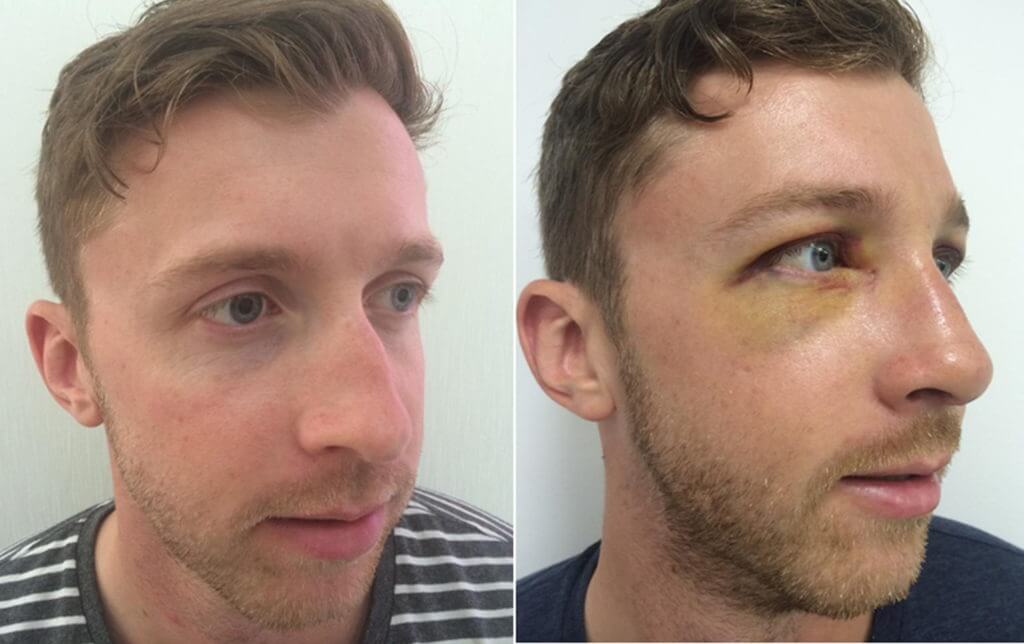4 Things You Must Know About Paranasal Sinus Fracture Surgery
Paranasal sinus refers to the hollow spaces in the bones around the nose. It comprises four sinuses: frontal sinus, maxillary sinus, ethmoid sinus, and sphenoid sinus. These sinuses open into the nasal cavity and help generate mucus to keep the nose from drying out during breathing. Trauma or injury to the upper or middle third of the face can result in a paranasal sinus fracture and affect one or more paranasal sinuses. If the injury is severe, it could even result in a traumatic brain injury. Read on to learn more about paranasal sinus fracture surgery, including procedure, treatment cost, recovery, and information about finding the right paranasal sinus fracture surgeon in India:
What are the Reasons for Paranasal Sinus Fracture Surgery?
As earlier said, nasal fractures are often a result of an accident or injury. They are one of the most common facial injuries and are often accompanied by other trauma such as cheekbone fractures. A forceful impact on the face caused by a car accident, sports injury, or similar trauma causes a sinus fracture. Men in their 20-30s are the most common group to sustain paranasal sinus injury. While in the urban areas, it could be due to an accident or fight, animal-related accidents are a significant cause of facial trauma in rural areas.
How to Recognize Paranasal Sinus Injury?
Patients with paranasal facial trauma complain of facial pain accompanied by visible signs and symptoms such as broken nose, swelling, bruising, bleeding, crooked or misshapen nose, etc. However, signs of a sinus fracture vary depending on the area of the fracture. For instance, patients with maxillary sinus fractures may have air under the skin around the cheeks or notice blood while blowing the nose. Ethmoid fractures are accompanied by orbital blowout fractures, while patients with frontal sinus fractures have a depression in the forehead. Similarly, if the back wall of the frontal sinus is fractured, it may cause cerebral spinal fluid to leak, leading to a runny nose that feels like salt water trickling down the back of the throat.
If you suspect a fracture, consult your physician immediately for a thorough check.
How are Paranasal Sinus Fractures Treated?
Treatment depends on the fracture’s location, complexity, and associated injuries. Minor fractures are often left as it is, wherein the doctor may suggest applying an ice pack and prescribing painkillers. The doctor may also suggest a nasal spray or injection relieve discomfort. But if the bones and cartilage around the nose are displaced, the physician may suggest manually realigning them. However, such a procedure must be performed within two weeks of the fracture.
If manual realignment is impossible, the doctor may suggest paranasal sinus fracture surgery to help realign the bones and reshape the nose. Reconstruction surgery is recommended when the nasal septum is damaged and the patient experiences breathing difficulties.
However, ethmoid fractures are not repaired unless done in conjunction with an orbital blowout fracture repair. Maxillary sinus fractures also do not need repair unless the injury is severe.
How is a Paranasal Surgery Performed?
The surgeon makes a small incision on the gum line to place the bones back in their original location. This is then secured using titanium plates. In accidents related to frontal sinus fracture, if the surgery involves CSF leakage, the fracture will have to be reduced and plated, and the sinus will have to be closed.
Dr. Sunil Richardson is a renowned paranasal sinus fracture surgeon in India with several years of experience treating various oral and maxillofacial injuries. Visit Richardsons Dental and Craniofacial Hospital to learn how he can help you after a facial injury or trauma.

